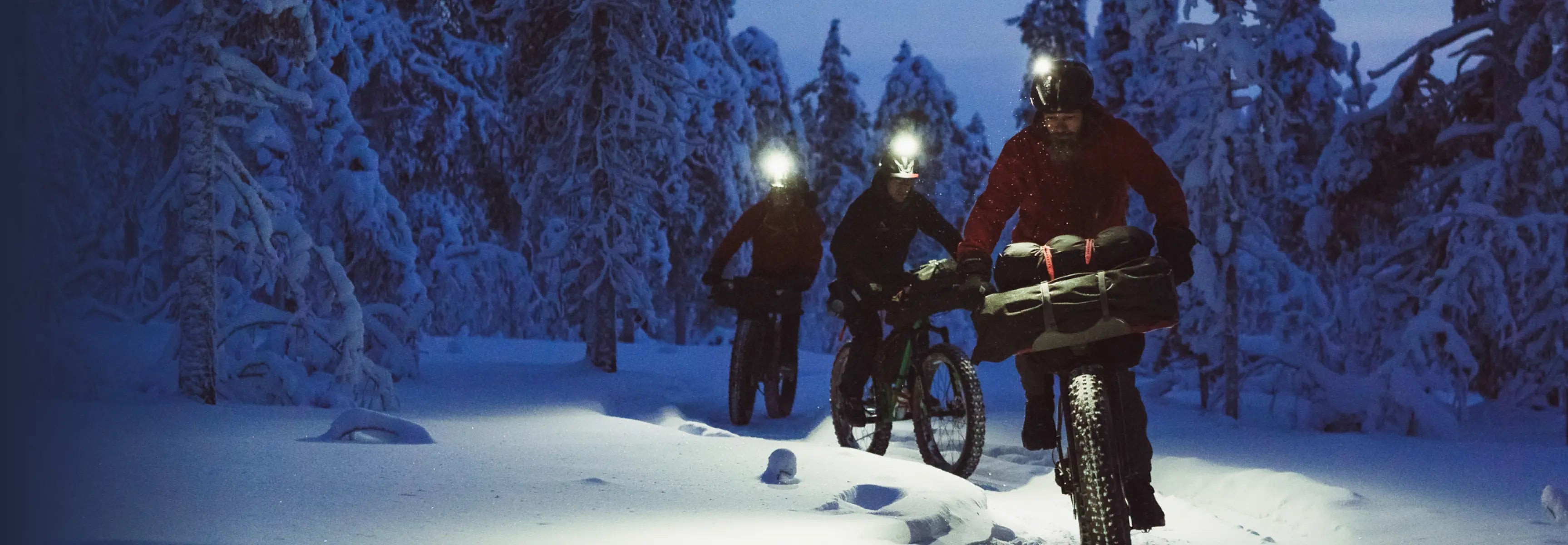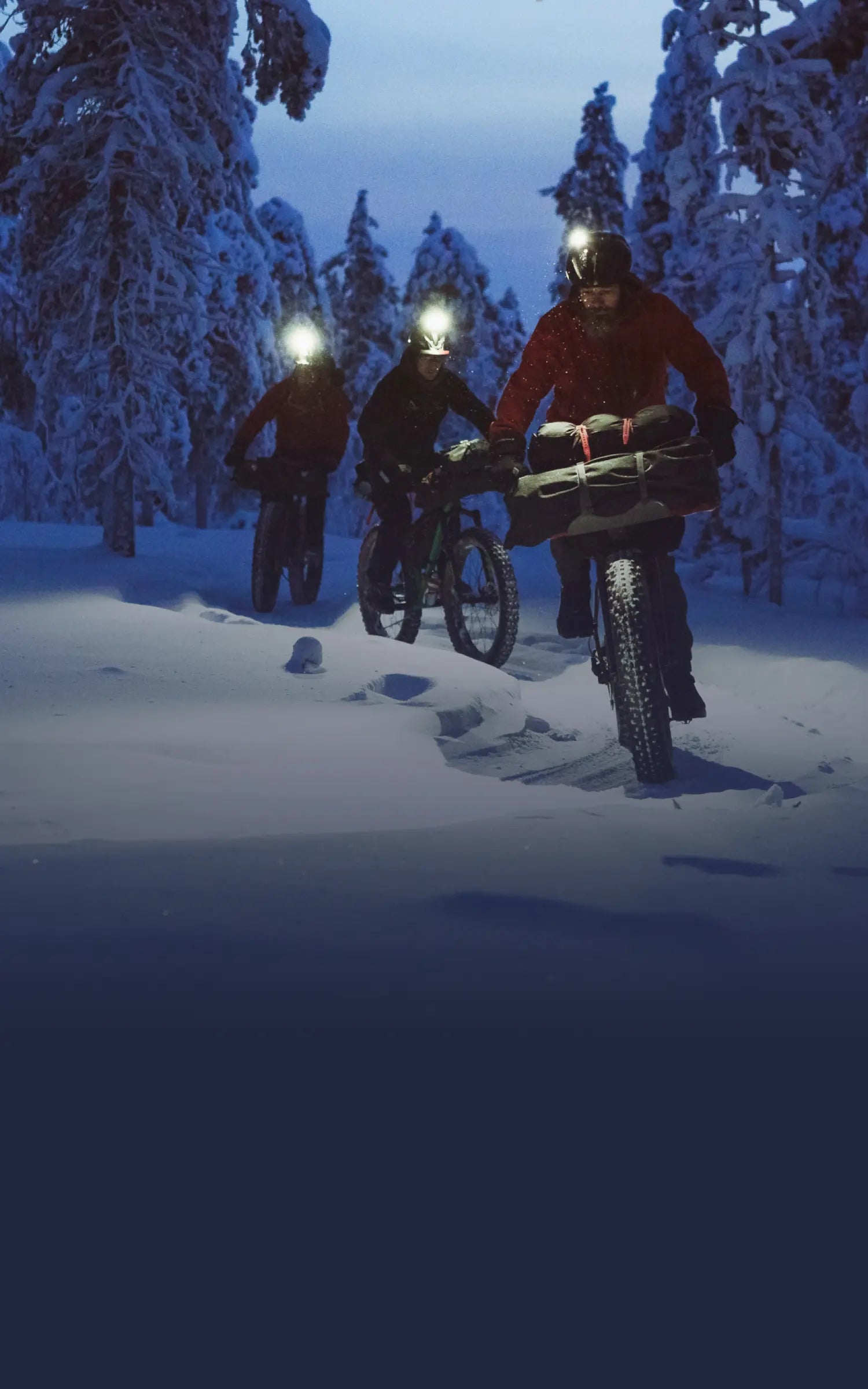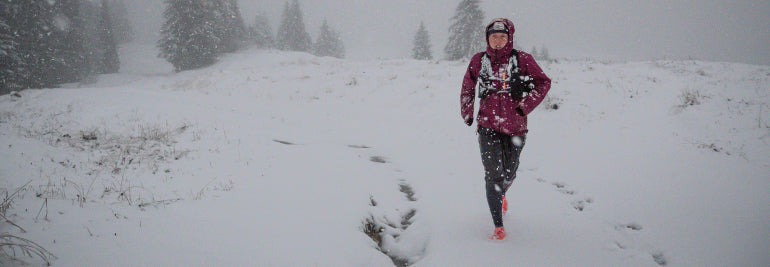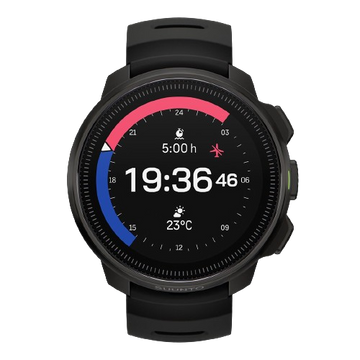

Suunto Blog

Five Adventure Starter Packs up for grabs!
If you love adventure like we do we want you to show it by sharing an awesome image from one of your recent trips on Instagram. Share your adventure pride, and you have a chance to get kitted out for your next trip: we have five Adventure Starter Packs to give away, each worth over 1350 euros!
Each starter pack includes a Suunto 9 GPS watch, an Arcteryx Alpha AR 20 backpack, an Insta360 action camera, a Jetboil portable stove and Oakley Clifden sunglasses. You’ll be ready to hit the trail!
How to enter:
1. Post an adventure image with text explaining what your best outdoor adventure has been or what your dream outdoor adventure would be. 2. Tag #adventurestartshere and #suunto, #arcteryx, #insta360, #jetboil, #oakley in your copy text. 3. Follow @suunto We’ll choose the 5 most inspiring posts among those tagged with #adventurestartshere plus #suunto #arcteryx #insta360 #jetboil and #oakley, and send the adventure gear their way soon after. Contest ends on November 23 at 8 am GMT. The most inspiring posts will win. Good luck! Terms and conditions apply. Read them here.

Watch this new adventure film about the folly of building walls
Local runners came and joined the team as they ran through different areas. © Philipp Reiter
To celebrate the 30th anniversary of the fall of the Berlin Wall, eight runners from Germany and Austria ran the 1400 km barrier that divided east and west Germany for 38 years.
The eight day relay run happened in November 2019 and now the team has released the documentary, which looks at both their journey, and the tragic history surrounding the wall.
They began in the south-east of Germany and ended in the north on the Baltic Sea. All along the way they encountered the still visible remains of the once militarised zone that west Germans once called “the death strip” because so many east Germans were killed while trying to escape across it.
All coming from Germany and Austria, the experience turned what was previously a vague sense of their own history into something real, moving and also rousing. Each runner felt the importance and urgency of defending democratic institutions, freedom and truth.
“There’s not a lot of the wall left, it was taken down,” says organizer, mountaineer, and film maker Philipp Reiter. “This really got me thinking that now it’s about taking down the walls that are in our heads, in everyone’s heads. It’s not about east or west anymore, it’s about all the things that get stuck in our minds and steal our personal freedom. All these things that stop us from being happy and being free.”
Watch their journey below.
Lead images:
© Philipp Reiter & Nicolas Holzmeyer
Read more articles
8 tools for tracking the weather with Suunto
Know your species of cloud
This relay run shows we are stronger together

8 tools for tracking the weather with Suunto
The weather is more than just a topic for small talk for outdoor people. It can directly impact our safety, or less dramatically, the awesomeness of an activity or adventure.
How many of you have ever been caught out by an April snowstorm when you were up in the mountains? Or how about running out of light before you made it to shelter or back to the road end? These can sometimes be alarming experiences. The good news is Suunto has solutions for these scenarios and more. Read on for some of our tools for weather intel.
© wisthaler.com
SuuntoPlus Weather
Whether you’re out hiking, trekking, ultra running, climbing or mountain biking, it’s wise to track the weather and environmental changes. That way there will be no unpleasant surprises. The Weather insights SuuntoPlus feature on Suunto 9 Baro helps you to do just this. It gives you a heads up on the conditions while you’re out there.
A combination of functions – storm alarms, temperature readings, barometric trends, sun and moon phases and more – give you the intel you need to make smart and safe decisions in the outdoors. Here’s an overview of the weather insights you’ll get:
Sunrise / Sunset
The upcoming sunrise or sunset, depending on which is next. This tells you when to pack up and get going, for example, or how much daylight you have left to finish your activity for the day.
Temperature
Take your watch off to avoid your body heat skewing the results, and place it on something to get an accurate temperature reading.
To get a water temperature reading, place it underwater (below 10 cm/ 4 inches). After you remove the watch the temperature is shown for 30 seconds, and is indicated with a separate temperature icon.NOTE: Measuring the water temperature will affect the ascent/descent values as these are pressure based.
Estimated time of arrival (ETA)
If the estimated time of arrival goes past sunset, it will be shown in red. This gives you heads up on how you are doing for time, whether you need to speed up or have enough slack to cruise.
Barometric trend and storm alarm
The barometric trend is shown on the bottom of the screen, with the current barometric value. The Suunto storm alarm is automatically shown if the pressure drops 4 hPa (0.12 inHg) or more during a three hour period.
Oxygen level
If you are above 2000 m (6 561 ft) your watch will give you a reading on the oxygen % compared to sea level.
Read how to use Weather on your Suunto 9 Baro here.
New outdoor watch face
The new Outdoor watch face on Suunto 9 and Suunto 5 gives you a heads up at a glance. No need to press any buttons; basic info is displayed right on the face in bright colours, including – depending on your watch – sunset and sunrise times, barometric trend, and more. Read more about it here.
MyRadar
Get sophisticated weather forecasts on your Suunto 7 with MyRadar, a free Wear OS app. MyRadar has two components; conventional weather forecasting and also an impressive high definition radar display of your location with time lapse shots of the weather fronts moving around your location, as these two pictures illustrate.
The weather forecasting offers hour by hour updates, lightning and weather alerts, precipitation predictions, and conventional daily and hourly forecasting. The high definition view and the accuracy of MyRadar has made it the go to weather app for many outdoors people.
Get the app here.
Klimat
This cool little service automatically adds the weather conditions from the beginning of your activity to your training log. No need to install anything on your phone; just sign up online and you’re in business. It allows you to look back and see when you braved the rain, or were out in that last horrendous storm.
You can choose the data and style, including emoji preferences, set the format and label it according to your purpose or aim. For an extra $5 a year, you get everything the free membership offers, plus some useful additional features such as air quality data, location info, and the removal of branding.
Start using Klimat here.
Sunrise and sunset alarms
This helpful feature gives you alerts when sunrise or sunset is approaching Photographers and fishermen, for example, won’t miss the golden hour again! For Hikers, climbers and trekkers, an alarm will tell you when the sun is rising so you know it’s time to pack up and get going. Conversely, an alarm lets you know when sunset is coming, telling you how much daylight you have to play with before finding shelter.
The alarms in your Suunto 9 and Suunto 5 are adaptive alarms based on your location. You decide when the alarm goes off, depending on how much in advance you want to be alerted before the sun rises or sets.
Set Sunset/sunrise alarms in Settings -> Alarms. Learn more about alarms on Suunto 9 here and alarms on Suunto 5 here.
Storm alarm
A significant drop in barometric pressure typically means a storm is coming and you seek shelter. When the storm alarm is active, your Suunto 9 Baro sounds an alarm and displays a storm symbol when the pressure drops 4 hPa (0.12 inHg) or more during a three hour period.
Activate Storm alarm in Settings -> Alarms -> Storm alarm. Learn more about storm alarm on Suunto 9 Baro here.
When your storm alarm sounds, pressing any button dismisses the alarm. If no button is pressed, the alarm notification lasts for one minute. The storm symbol remains on the display until the weather conditions stabilize.
Moon phases
In addition to sunrise and sunset times, your watch can track moon phases. Based on the date in your watch, this feature is particularly useful if you plan to be moving at night; it will indicate how much moon light you can count on for visibility. The moon phase is available as a view on the Outdoor watch face of Suunto 9 and Suunto 5 mentioned above. Tap on the screen to change the lower row until you see the moon icon and percentage.
Outdoor insights
Suunto 9 Baro constantly measures absolute air pressure using its built in pressure sensor. This sensor plays a key role in determining barometric trends, storm alarms, temperature and more. Based on this measurement and your altitude reference value, it calculates altitude, or air pressure.
Swipe up or press the lower button to view the Outdoor insights including current altitude and barometric pressure, the current temperature and the altimeter and barometer trend graphs. To see barometric trends on a Suunto 7, you can use the Baro Trends Wear OS app.

Get key info at a glance with the new Outdoor watch face
The new Outdoor watch face for the Suunto 9 Baro, 9, 5 and 3 watches allows users to track conditions and daylight hours with just a quick glance. No need to press buttons or scroll – the essential info is presented on the screen.
Suunto UX designer Jeanette Lau supported the development and says the motivation behind the watch face was to support users with their adventure planning. “We wanted to inspire and equip users for their outdoor adventures,” she says. “We conducted some research and we learned many of our users felt as if there wasn’t enough time in the day and wanted to know what the conditions were before embarking on their adventure.”
Click to learn about 8 tools to track the weather with Suunto
For all of the above watches, the Outdoor watch face features a sun gauge that displays the number of night and daylight hours before sunrise and sunset. Tap the screen once, and the watch face displays the number of hours until sunset or sunrise, plus the battery life remaining, or the moon phase, which is helpful because on a full moon night you know you’ll have extra light to stay out a little longer.
“Most of the time we feel as if there isn’t enough time in the day,” Jeanette says. “But with this watch face, I can see exactly how much time I have for a run before the sun sets without having to do the math myself.”
On the Suunto 9 Baro
On Suunto 9 Baro watches – which have a barometer – the Outdoor watch face also displays an air pressure gauge along with current altitude. With two taps on the screen, a more detailed screen appears, displaying the barometric trend and, once they are 2000 m or higher, the oxygen percentage.
On the Suunto 9, Suunto 5 and Suunto 3
Rather than extra barometric info, on the Suunto 9, 5, and 3 watches, the Outdoor watch face includes a steps gauge that quickly tells users where they’re at with their daily step goal and how many calories they have burned.
To get the outdoor watch face on your Suunto 9 Baro, Suunto 9, Suunto 5 or Suunto 3, make sure you have the latest software version on your watch and then enter the watch face selection in your watch settings and choose the newly loaded face.
Read more articles
8 tools for tracking the weather with Suunto

Impressions from the AlpFrontTrail relay
After eight days of running, covering a distance of 850 km and 55,000 m of elevation gain, the AlpFrontTrail relay team of 10 athletes made it to Stelvio Pass in northern Italy. On October 6, they had begun in Grado, an Italian seaside town, and finished in Stelvio Pass in northern Italy.
“It was very challenging!” says Philipp Reiter, co-organizer of the adventure. “All the organizational work, the challenging and always changing weather, the deep historical stories, and the fact we were 10 top athletes with one common goal, but a lot of individual wishes!”
Fom Germany, Austria and Italy, the passionate band of runners took turns to cover stages of the historic 850 km frontline in the European Alps where Italian and Austrian troops fought during the First World War. The goal of the epic adventure run was to observe Italy’s annexation of South Tyrol 100 years ago and to celebrate how far Europe has come since the hostilities and wars of the 20th century. While each pair ran, the rest of the athletes visited historic sites and talked to local people about the history.
In this photo story, we share action and impressions from the adventure. For video action of the adventure click here.
Day one
“The AlpFrontTrail was hence a running adventure with a deeper sense,” says Caroline Gredler, one the field organizers. “It should remind us, that it´s not a given that we can nowadays run along or cross borders in freedom and peace. We should value what we have and respect one other.”
© Philipp Reiter
Day two
“The challenge was to find the way on the borderline – even with my Suunto Baro 9 it was sometimes hard,” says Austrian ski mountaineer Jakob Hermann. “And the conditions were sometimes tricky; snow in altitude, destroyed forests (so there was no track), darkness and the physical stress with less sleep was also a challenge. The good thing was we had an awesome and strong team! So all were super helpful and we grew together!”
© wisthaler.com
Day three
“A border, be it a wall, barbwires or trenches is never a solution,” says ultra runner Tom Wagner. “It is actually nonsense. Running along a former front was an intense way of learning from the past to potentially help us shape the future.”
© wisthaler.com
Day four
“I had the opportunity to run a stage of the AlpFrontTrail together with Italian athlete Martina Valmassoi,” says Caroline. “It was the going over the Mountain Col Di Lana – a mountain which was fiercely contested in the Alp Front war – that had the biggest impact on me. Austrians and Italians stood facing each other within shouting distance and tried three times to blow each up with explosives. More than 8000 soldiers died and hence the mountain is nowadays also named Col di Sangue – the Blood-Mountain. There are still many tunnels and trenches which remind us of this horrible fight, as well as a memorial church on the top of the summit. It was a special feeling to run through this place, esspecially as Italian and Austrian friends here in peace together!”
© wisthaler.com
Day five
“Seeing these beautiful place, but being reminded what happened here before is hard to grasp,” says Tom . “The places we visited should be walked, hiked, or run by so many more people to learn about the past and be aware that something like this should never happen again. Unfortunately it can happen more quickly than we want to acknowledge.”
© Philipp Reiter
Day six
“It was so great to share this special project with different runners, from fast vertical runners to strong ultra runners,” Jakob says. “I learned a lot from all of them!”
© wisthaler.com
Day seven
“At the beginning of WW1 at the alpine front it was not really a war as soldiers on either side often knew one other and were working colleagues, friends or relatives,” says German trail runner and fil maker Philipp Reiter. “They shot into the water or in the air not to hurt each other. The command had to exchange the soldiers and bring young men from other regions to make them shoot the other side.”
© wisthaler.com
Day eight
“We have to be thankful with what we have now!” says Jakob. "We complain too much – particularly about irrelevant things! We have to try to stay positive and help one another.”
© wisthaler.com
© wisthaler.com
To find out more about the AlpsFrontTrail relay, visit: www.alpsfronttrail.com
Lead images:
© wisthaler.com
© Philipp Reiter

Running movies: Running the Roof adventure film selected by Banff Film Festival
Gabe found his ultra legs deep into the adventure.
It all started at a party when buddies Jody Bragger and Gabriel (Gabe) Ghiglione – both bored of their deskjobs and craving adventure – made a drunken bet; they’d spin a globe and wherever Gabe’s finger landed they’d go and run there. It landed on Tajikistan.
Neither of them had the faintest idea about the landlocked Central Asian country with a population of 9.5 million or of its history as part of the ancient Silk Road. Neither of them had any idea what they were getting themselves into. So they roped ultra runner Jodie Gauld into joining them, and hopped on a plane.
The Running the Roof feature film, made by film company Sourcy and sponsored by Suunto, is about the trio’s journey running 400 km, the equivalent of about 10 marathons, through eastern Tajikistan’s remote and desolate Bartang Valley. They faced intense heat and cold, 4500 m altitude, dust, Gabe’s constant antics, their own minds, and a lot of unknowns.
We caught up with Jody Bragger to talk about the adventure. Read on for our Q&A and watch the trailer below.
The virtual edition of the Banff Film Festival will show the film on 31 October 2020.
How does it feel having the film selected by Banff?
We never went into this pretending we were anything other than just three mates who like running. The premise of this whole expedition was to go and have a great time. When we told our friends about it they wanted to make a film about it, but we never went in with this idea of creating another big adventure film with super, deep meaning. We went away to have a really good time, to have a laugh, and see what we can do. There was no pressure to scale this mountain, or be the first or the fatest or reach some arbitrary goal. It was just about being there together as friends and exploring this beautiful, remote and wild place.
What were the most epic runs that each of you had done?
Jodie Gauld and I both come from the ultra running discipline. Jody has run TDS at UTMB, I’ve done CCC at UTMB. Jody has run 25 ultras, she’s done 100 milers, some tough races. I’ve run a few of the big races, like Ultra Trail Cape Town. We were both aware of the pitfalls of ultra running and knew what to expect.
Gabriel really was the archetypal North American university track athlete. He only started running distances further than 10 km in the last couple of years. He’s definitely a super strong, fit and fast runner. But he only ever ran one marathon previous to this and that was the Barcelona marathon and he had left a nightclub at 4am on the day. He really is someone who loves running, but never takes it too seriously.
Jody (left), Jodie and Gabe all faced adversity on the adventure.
What was the hardest part of the run?
It was definitely the elements, the valley itself, and an unknown aspect that played in the back of our minds. None of us had ever run at 4500 m altitude. The psychological aspect was a big factor. We didn’t know what it was going to be like running at elevation, we didn’t know how the film crew was going to work, we didn’t even know where we were going to stay. Running is all about mind over matter and really believing that you can push on when you feel like you can’t. The heat and the cold, the elevation, the dust, the unknown – that’s what we were up against.
What was the elevation gain?
In total it was somewhere around 5000 m, over 400 km distance. We started at 2500 m and the highest pass was around 4700 m. We were running consistently above what some people call the danger zone where you’re likely to get altitude sickness. The altitude not only affected our running, but also our sleep, eating, and hydration.
The Bartang Valley is located in the Pamir mountain range, the setting of the Great Game in the 19th century.
Did you train for the altitude?
We didn’t do any specific altitude training. Me and Jodie both ran TDS and CCC at UTMB around a month before we went. That was our way of training for the expedition. I remember on the first day there when we set off running thinking, “well, at least we can run, at least it’s working”. It sounds crazy, but when you’re planning something for so long, when there are so many unknowns, it’s the moment when you take the first step that you understand it’s really happening.
Were the local people there hospitable?
Yes. It was a lovely reminder of our shared humanity. We often go into these places as travelers feeling like we’re breaking new territory, but these places have a history for a millennia of hosting people on the move. Tajikistan and its culture has had people in transit ingrained into it. It was part of the route of the Silk Road. Hospitality for strangers just sort of shines through there. It really is the crossroads of the world. That culture of welcoming people in, allowing them to stay in your home, complete strangers who don't speak the language, and giving them a good meal and setting them off on the next day just seemed so natural. They also gave us so much knowledge about the route, the next village, where we could find lodgings, food and water.
How was the food?
I don’t think Tajikistan is known for its cuisine. But the food was always plentiful. It’s a place where resources are fairly scarce and completely based on self sustained agriculture. They grow what they eat, store what they don’t eat, and trade a little bit. Most places keep everything just for the community. They provided plentiful food for us.
The three friends never took the adventure too seriously.
What surprised you most there?
Probably the relationship people there have with nature. The valley is a microcosm of all the issues we face as a species. They really do live in equilibrium with the valley so it’s almost like you don’t want too many travellers there because then they’re going to have to push the limits of what the valley can support.
I spoke to one guy who told me he was really enjoying having tourists there because they pay in currency, which is something he hadn’t previously had much access to. He had a small self-sustaining farm and he occasionally traded with food at a market or occasionally sold a little bit for cash. Currency from tourists allowed him to buy some things for his family, like a mobile phone for communication.
He told me all the energy they get is from the forest, from the wood. He would chop down trees at a rate he knew was sustainable for the valley to replenish itself so the next year there would be enough wood. Even that little extra amount of tourists coming through required more wood. He noticed he was cutting more wood. He was interested in getting a small hydroelectric pump you can put on rivers to generate energy.
It was almost like going back in time and seeing how things were in many places not so long ago. It made me realise how unique that part of the world is. These sorts of wild, high mountain, desert areas are teetering on the edge of remaining that way or having to modernise.
Now that a year has passed since you finished it, what are your thoughts looking back?
As we all locked ourselves inside because of the pandemic, and as our horizons have closed and our expectations have shrunk, the film has come into its own, strangely. Our worlds have become smaller and often based around a laptop screen. The film is a nice reminder of the world we left behind. And maybe flying around the world and doing crazy things isn’t the most sustainable long term. But the film is a reminder of that freedom of being young, throwing some things into a bag, jumping on a bus, a train or a plane, and going out there and pushing yourself to your limit. I look back at that adventure with a heavy sense of nostalgia. I miss those days a bit.
Any other comments?
I guess I want to say to people watching it that these kinds of things are possible. Neither Jodie, myself or Gabriel are pro athletes, we aren’t sponsored by anyone, we aren’t paid to do this, we haven’t got a brief from a firm to create content around. We are none of these things. We literally got drunk, spun a globe and decided to do this. It shows what’s possible. And running through a landscape is an amazing way to connect with people. When you’re on two feet, you feel more connected to nature, the flow of the river, the way the sun rises, the plants and animals, and the connection with humans is more real than travelling by car.
Running the Roof will be screened at this year’s virtual edition of the Banff Mountain Film Festival on 31 October, 2020 and available to download online.
All images: © Alex Mundt














































































